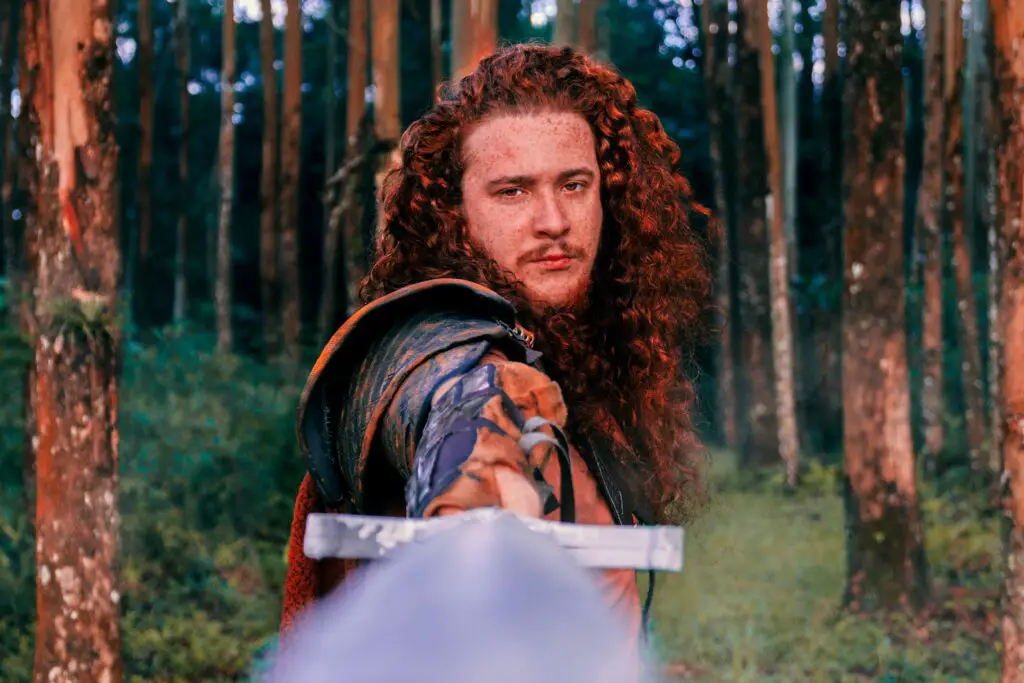This article may contain affiliate links. For details, visit our Affiliate Disclosure page.
Introduction:
In the annals of history, the Vikings stand out as fierce seafarers, intrepid explorers, and formidable warriors. These Scandinavian raiders of the early medieval period have captured our imaginations with tales of their epic voyages, grand longships, and fearsome battles. Yet, one aspect that often piques curiosity is the physical stature of these legendary figures. How big were the average Vikings? Were they towering giants, or were they more akin to the average person of their time? In this blog post, we will delve into the intriguing world of Viking stature, exploring various aspects of their physicality, including height, build, and the factors that may have influenced their sizes.

The Height of the Norsemen:
The first aspect we shall explore is the height of the Norsemen. It is often assumed that these seafaring warriors were of impressive stature, towering over their contemporaries. However, historical evidence suggests a more nuanced reality. While there were certainly tall Vikings, the average height was not exceptionally different from that of other Europeans during the Viking Age.
Despite the depictions of hulking Vikings in popular culture, studies examining skeletal remains and archaeological evidence reveal that the average Viking male stood around 5 feet 7 inches (170 cm) tall. Viking women were typically shorter, measuring approximately 5 feet 2 inches (157 cm) in height. These figures align closely with the average height of the broader European population of the time, dispelling the myth of the Vikings as a race of giants.
Factors Influencing Viking Stature:
To understand the factors that influenced Viking stature, we must consider various elements, including genetics, nutrition, lifestyle, and social status.
a) Genetic Background:
The genetic makeup of the Norse population played a role in determining their physical attributes. Scandinavian genetics have long been associated with the wider European gene pool, and while there may have been some regional variations, there is no evidence to suggest that Vikings possessed distinctive genetic traits that significantly influenced their height.
b) Nutritional Considerations:
Nutrition played a crucial role in shaping the stature of the average Viking. Access to a balanced diet was essential for optimal growth and development. It is likely that the dietary patterns of the Vikings varied based on their socio-economic status, with wealthier individuals having better access to a diverse range of food sources. However, the scarcity of resources during long voyages and winter months could have posed challenges to maintaining a consistently high-quality diet for all Vikings.
c) Physical Activity and Lifestyle:
The physically demanding lifestyle of the Vikings, which encompassed extensive voyages, farming, and warfare, may have also impacted their stature. Engaging in rigorous activities from a young age could have contributed to their overall robustness and physical strength. The Vikings’ daily routines involved tasks such as rowing, lifting heavy loads, and combat training, which likely contributed to their muscular builds and endurance.
d) Social Status:
Social status and access to resources were influential factors in determining the physical attributes of the Vikings. Higher social classes might have had better access to quality nutrition, leading to healthier growth and potentially taller stature. Additionally, physical prowess was highly valued in Viking society, with warriors often held in high regard. This reverence for strength and the physical aspects of masculinity may have influenced the perceived ideal Viking physique.
Variations in Viking Build:
While the average height of Vikings may not have been exceptional, their build and physique displayed certain variations that added to their overall physical presence.
a) Muscularity and Strength:
One notable characteristic of the Viking physique was their muscularity and strength. The demanding nature of their lifestyle, which included activities like rowing, wielding weapons, and engaging in physical labor, contributed to the development of robust muscles. This physical prowess served them well during their numerous expeditions and battles, where their strength played a crucial role in their success.
b) Endurance and Stamina:
In addition to their muscular build, the Vikings possessed impressive endurance and stamina. Their voyages often lasted for extended periods, requiring them to withstand the harsh conditions of the open seas. This resilience was also evident in their land-based pursuits, such as long marches or extended sieges. The combination of physical strength and endurance made the Vikings formidable opponents, capable of enduring and prevailing in challenging situations.
Myth and Reality: Challenging Stereotypes:
The popular image of Vikings as brawny, brutish warriors has permeated popular culture, perpetuating certain stereotypes. However, it is crucial to recognize that Viking society was diverse and multifaceted. Not all Vikings were warriors or engaged in physically demanding activities. The Viking world encompassed traders, farmers, craftsmen, and explorers, each with their own roles and contributions.
While physical prowess was certainly admired and valued within Viking society, intelligence, wit, and strategic thinking were equally important traits. The Vikings were a complex civilization that thrived on a combination of physical and mental capabilities, allowing them to excel in various spheres of life.
Conclusion:
Exploring the physical characteristics of the average Viking reveals a nuanced picture that challenges popular misconceptions. While they were not towering giants, the Vikings possessed a unique blend of physical attributes, including average height, muscular build, and impressive endurance. Their physicality was shaped by a combination of genetic factors, nutrition, lifestyle, and social status. Understanding the reality of Viking stature enables us to appreciate their accomplishments even more, acknowledging their indomitable spirit, resourcefulness, and cultural contributions beyond mere physical appearance.
The legacy of the Vikings extends far beyond their physical attributes, as their impact on history, exploration, trade, and culture resonates to this day. By recognizing the multifaceted nature of Viking society, we can shed light on the rich tapestry of their achievements and appreciate the indelible mark they left on the world. So, the next time you envision a Viking, remember that their greatness lay not only in their size, but in their unwavering spirit and pioneering spirit.
